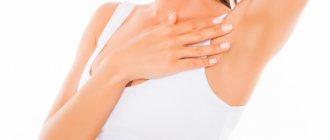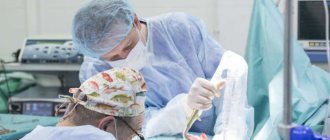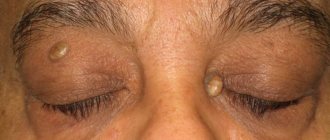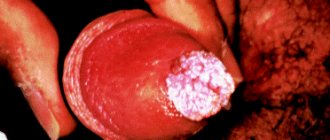Pale skin tone can often be a physiological feature and not a sign of pathology. This is observed in some children and is due to the high density of the skin, behind which deep-lying vessels are not visible. In this case, the complexion can vary from yellowish to greenish. Moreover, blush on the cheeks does not always indicate that the child is healthy, and sometimes serves as an external indicator of elevated body temperature.
Pale skin of the face occurs for a number of reasons, which can be divided into two classes - objective (manifested in any aging organism) and subjective (characteristic of a particular person, associated with his lifestyle, caused by genetic predisposition or diseases developed during life).
Why does a person have an unhealthy complexion?
There are many factors that influence your complexion. Of course, you can use decorative cosmetics to correct the situation, but this will not completely solve the problem. After all, serious problems can provoke an unhealthy complexion. The skin may lose its natural shade and natural radiance for the following reasons:
- health status. If the skin is pale, this may indicate problems associated with blood circulation, the cardiovascular system, hypoxia, low blood pressure, and vegetative-vascular dystonia. If the skin turns red, then we can talk about too high pressure. If a sallow complexion is noticed in women and men, then the digestive system may not function properly, and there may not be enough water in the body. Yellow skin can become a result of problems with the kidneys and adrenal glands. A white tint is created when metabolism deteriorates. Another important reason for the deterioration of complexion is stressful situations;
- poor nutrition. If the body does not receive enough vitamins and necessary products, then the skin and its appearance changes. If the body contains too many carbohydrates and fats, then metabolic processes slow down, more sebum is secreted, the body is not so well supplied with oxygen, and the pores become clogged. Skin color changes for the worse if a person drinks carbonated drinks, strong tea or coffee;
- bad habits. A capillary network appears on the cheeks and nose, and red spots appear. This indicates that the person drinks alcoholic beverages. As for smokers, their skin has a yellowish-gray tint;
- use of medications. We are talking about diuretics, antibiotics, and oral contraceptives. All of them worsen the complexion;
- incorrect regime regarding rest and work. What causes unhealthy complexion? If a person does not sleep enough time, the body becomes exhausted. This leads to premature aging, dark circles, bags under the eyes. The skin takes on a sluggish, dull appearance. You shouldn’t overload your body physically yet. It is also not recommended to stay in one position for a long time, otherwise there is a risk of vascular spasm;
- age. As a woman gets older, collagen synthesis slows down, causing skin tone to change, wrinkles to appear, and elasticity to be lost;
- external environment, its impact. We are talking about the abuse of tanning, exposure to the rays of the sun, and temperature changes. The skin loses its elasticity, tissues become dehydrated, the face acquires a grayish tint, and age spots may appear. Unhealthy complexion can appear for various reasons - the culprit may be dry air in the room, as a result of which moisture is lost in the body, and cells begin to feel oxygen deficiency;
- lack of regular skin care. If you clean it incorrectly, do not moisturize it, do not nourish it, then the color of the skin will deteriorate. The use of poor quality decorative cosmetics can also lead to this.
When does pallor occur throughout the body?
Central cyanosis or, in other words, pallor of all the skin of our body occurs when there is a violation of blood saturation in the lungs.
This happens in the following cases:
- Respiratory failure due to lung diseases
- Some blue-type heart defects, in which there is a pathological discharge of venous blood into the arterial bed due to defects in various walls of the heart, for example, with tetralogy of Fallot
- Exposure to various industrial poisons, such as aniline derivatives
- Taking certain medications (for example, sulfa drugs)
As a rule, the disappearance of the pathological factor, as well as the supply of oxygen, leads to a decrease in the severity of cyanosis.
How to improve your skin tone?
There are standard recommendations that will help remove unhealthy complexion:
- you need to undergo a medical examination to determine possible diseases that could provoke this problem;
- carry out treatment that should be prescribed by a doctor;
- lead the right lifestyle, it should be active;
- Get enough sleep. This should be at least 6 hours per day;
- eat the right food - more fresh foods, less pickled, fried, fatty flour, drink clean water and plenty of it;
- exercise;
- walk in the fresh air, ventilate the room;
- do not use a lot of contraceptives, antibiotics;
- avoid stressful situations;
- try quitting smoking and drinking less.
These are the main activities that will help improve your skin tone and help your skin heal.
Attention to tests
Children rarely suffer from malignant tumors. They account for only 10% of all childhood diseases. Moreover, the majority of all cancers in children are hemoblastoses (blood tumors). One of the manifestations of the disease is a change in the cellular composition of the blood and anemia (decrease in the level of hemoglobin in the blood). Common symptoms of anemia include fatigue, weakness, lethargy and pale skin.
Of course, a decrease in hemoglobin levels is not always a sign of cancer in a child, but if there are problems in this area, you should be wary and conduct a more detailed examination with a doctor.
Procedures to improve skin color
How to improve complexion? In salons today, many procedures are carried out, and among them there are some that correct skin tone and eliminate its dullness. And many experts say that such procedures are distinguished by their effectiveness. There are certain limitations and indications for each technique. Therefore, you first need to study the cause of the skin color disorder, and then only think about treatment. Cosmetologists recommend performing the following procedures to improve skin tone:
- mesotherapy. Here the cells are filled with nutrients. Injections are made into problem areas and the drug is administered. As for the medicine, it depends on the disorder itself, its type;
- chemical peeling. This method of skin correction is considered very effective. Special preparations are applied externally, causing a chemical burn, which can vary in intensity. Even if the treatment is superficial, the result of the procedure will be different. The skin of the face will be smooth, elastic, toning, and will have an even tone. But this procedure needs to be done by professionals to avoid serious consequences;
- laser peeling. It already uses a laser that does the job accurately. It will help get rid of age spots, brown, dull complexion;
- face massage. This procedure is characterized by normal perception and safety. It allows you to improve skin tone, remove skin unevenness, regenerate tissue, stimulate blood circulation;
- other procedures. They also carry out plasma lifting, photorejuvenation, biorevitalization, etc.
Gray complexion can be removed using ultrasonic facial skin cleansing. It has proven its effectiveness. But it is worth remembering that all of the listed procedures should be performed exclusively by specialists.
Age-related changes
After a person reaches the age of 45-50 years, the likelihood of developing cancer increases. The longer a person lives, the more he comes into contact with carcinogenic factors. In addition, he already has chronic inflammatory diseases (where constant cell division and mutations occur), against which cancer often forms. Therefore, it is important to regularly undergo medical examinations and screenings offered at the clinic. This will allow us to identify precancer and early stages of cancer pathologies.
Screening is the most effective way to reduce mortality from major cancers among adults. For women, this is early detection of breast and cervical cancer. Screening also makes it possible to determine the early stages of colon cancer and lung cancer, including in people with a long history of smoking.
Article on the topic
Doesn’t hurt – does that mean you’re healthy? 12 myths about oncology that you shouldn’t believe The appearance of characteristic symptoms - sudden weight loss for no apparent reason, the appearance and intensification of weakness, pallor or yellowness of the skin, decreased appetite, increased shortness of breath and hemoptysis, an increase in the size of the abdomen, bloody discharge from the genital tract, etc. - occurs, as a rule, already at stages 3-4 of cancer. If such ominous signals occur, you should immediately consult a doctor and urgently undergo examinations to exclude or confirm cancer. Relatives should insist that their loved one with similar symptoms visit a doctor.
It is important to understand that cancer is not always a death sentence. If you take care of yourself, pay attention to the condition of your relatives in time and go with them to the doctor, it is quite possible to be cured.
Signs of pneumonia in an adult
When the disease appears, a person’s body temperature rises, which can reach 38°, there is general weakness throughout the body, a headache, the patient wants to lie down and relax. After a few days, a strong paroxysmal cough appears and sputum appears.
Pain in the chest, especially at the site of inflammation, as well as the appearance of shortness of breath indicate the seriousness of the situation and clearly indicate pneumonia.
General signs are listed here, but the nature and timing of their manifestation may differ depending on the type of pneumonia. With viral pneumonia, the first symptoms appear quickly and the patient feels a sharp deterioration in health. From the very beginning of the disease, muscle pain, high body temperature, severe headache, and a painful dry cough are observed.
Bacterial pneumonia, on the contrary, develops gradually. The disease begins only 2 weeks after the first symptoms appear. After this, there is a sharp relief, an improvement in the general condition of the patient, then the temperature rises sharply again, a headache occurs, the cough intensifies, and purulent sputum appears.
One of the serious types of the disease is atypical bilateral pneumonia, which extensively affects the lung tissue and develops respiratory failure. In terms of its symptoms, bilateral pneumonia resembles a cold viral infection, and the characteristic wheezing is not yet heard in the lungs. Many begin to treat themselves, which aggravates the condition.
At first, the sick person thinks that his condition has improved, the symptoms of the pathology begin to go away. But then the cough worsens and the second wave of the disease begins.
Symptoms may vary slightly in older people. First of all, a dry cough and shortness of breath appear during minor physical exertion on the body or even at rest. Often the disease occurs without fever in older people.
What is the danger of the symptom?
- Signs of a pale face can indicate stress , insufficient sunlight and nutrients, low physical activity and health problems, especially dangerous if it is heart disease.
- If the skin is too pale , then it is poorly protected from the negative effects of ultraviolet rays on it, which can lead to redness and even burns.
- If the skin color is too light due to poor circulation, then an insufficient amount of oxygen and nutrients leads to dryness, sagging and accelerated aging.
Cost of consultation for anemia?
| Name of service | Price, rub.) |
| Initial appointment with a cardiologist | 2000 rub. |
| Repeated appointment with a cardiologist | 1500 rub. |
| Primary appointment with a general practitioner | 2000 rub. |
| Repeated appointment with a general practitioner | 1500 rub. |
| Prescription of treatment (drawing up an individual treatment regimen) | 1500 - 3000 rub. |
All our services and prices
What to do if you feel faint: first aid
All first aid techniques during a pre-fainting state are aimed at preventing the onset of full-fledged fainting. Let's look at all the necessary steps in detail.
- The first is to provide oxygen access to the room, and, if possible, take a comfortable position. Remove all objects that put pressure on the chest and neck (scarf, tight collar, tie). To better saturate the blood with oxygen, it is necessary to take rhythmic inhalations and exhalations. If the breathing process is difficult, ammonia will help. A sweet, warm drink in the form of tea also helps relieve an attack. If you suspect evaporation of harmful substances in the room or a gas leak, you should quickly leave the building and go outside.
- After the crisis has passed, the body must be provided with the required amount of fluid, which involves consuming at least 2.5 liters of water per day. Taking drugs such as Asparkam and Panangin will normalize the balance of electrolytes in the blood and ensure normal blood supply to all organs. And, of course, it is necessary to establish the cause of the pathology.
- If you have chronic fatigue syndrome, you must take the necessary vitamins and minerals and ensure all conditions for normal work and rest. In case of hypotension or anemia, the cause of this condition should be immediately determined. Since some pathologies require immediate medical attention.
Everything we talked about in this article needs to be known and remembered by every person. Because presyncope attacks develop suddenly, which can pose a serious threat to life. After all, at this moment a person can cross the roadway or drive a car. The most important thing when providing first aid to yourself or your loved ones is to prevent full-blown fainting from developing.
Primary appointment with a neurologist: 1850 RUR.
Sign up Online 5% discount when registering from the site











